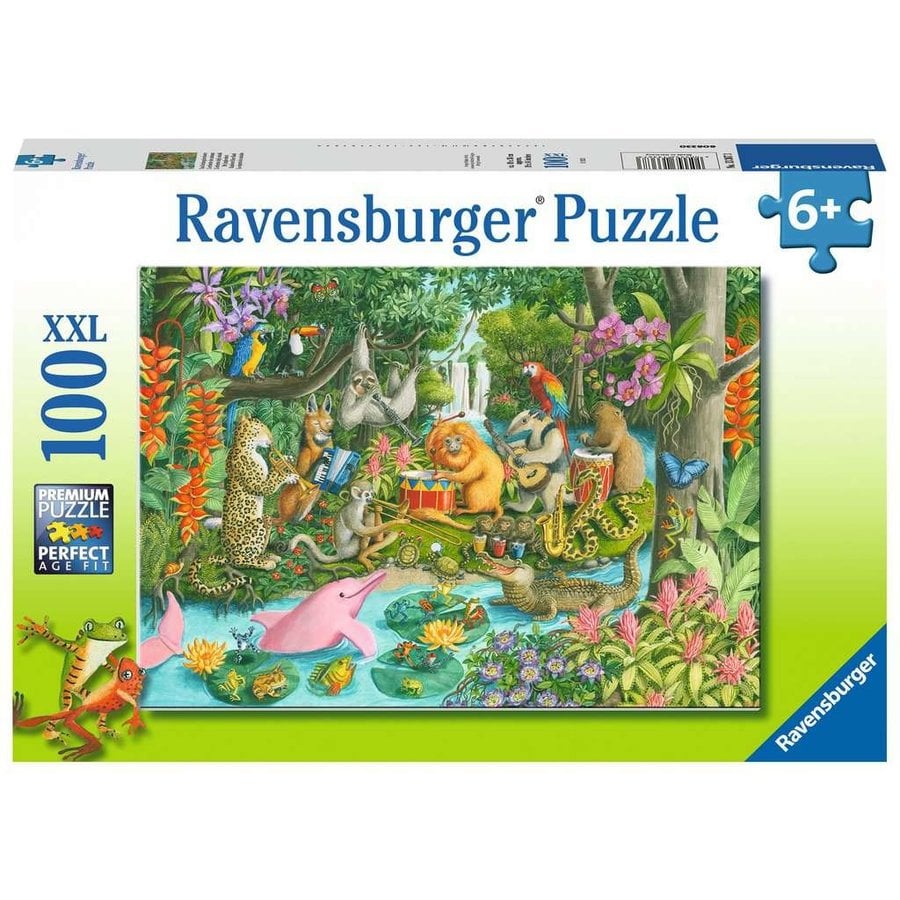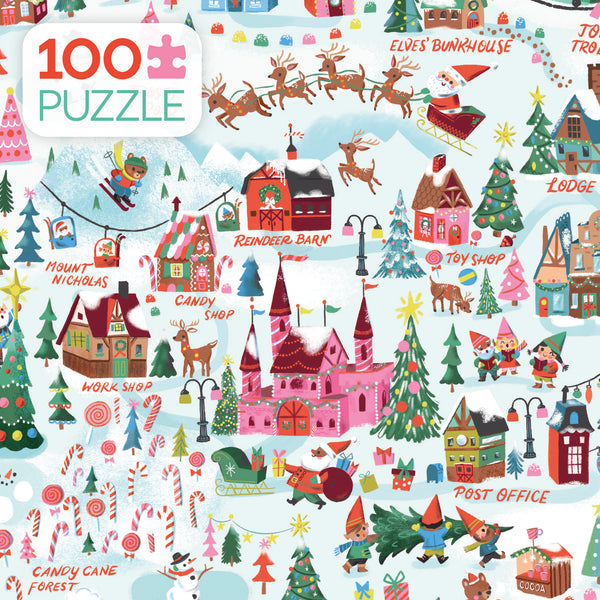The Appeal of 100 Piece Puzzles: Who Should Try Them?
100 piece puzzles! The allure of 100 piece puzzles is quite broad, offering an accessible challenge for a variety of people. Kids who have outgrown simpler puzzles will find these a perfect step up. They provide a stimulating task that’s not too intimidating. Likewise, adults seeking a little mental workout can benefit from the concise challenge of a 100 piece puzzle. They are ideal for those short on time but still wanting to engage in a mentally refreshing activity.

Families will find that these puzzles are great for bonding. With a manageable number of pieces, family members can collaborate without the pressure of more daunting puzzles, creating an enjoyable family game night experience. For educators, incorporating these puzzles into class activities can help develop students’ problem-solving skills and attention to detail.
Those new to puzzling, or who enjoy the satisfaction of completing a project in a single sitting, will appreciate the scale of 100 piece puzzles. Due to their moderate size, these puzzles can often be completed in a session, offering a quick sense of accomplishment. This makes them particularly appealing for beginner puzzlers.
Puzzle enthusiasts who crave variety will also enjoy the wide range of themes and images available in the 100 piece puzzle category. From serene landscapes to vibrant pop culture icons, there’s a theme to suit every individual taste. Lastly, for those seeking a mindful break from the digital world, these small-scale puzzles offer a tangible way to disconnect and unwind.
In summary, 100 piece puzzles cater to people of all ages and skill levels, making them a versatile choice for anyone looking to engage in a creative, brain-boosting activity.
Step-by-Step Instructions to Get Started with 100 Piece Puzzles
Starting with 100 piece puzzles can be both exciting and slightly baffling for beginners. To ensure a smooth puzzle-solving experience, follow these simple, step-by-step instructions.
- Unbox and Sort: Open your puzzle and spread out all the pieces on a flat surface. Take a moment to turn every piece picture-side up.
- Identify Edge Pieces: Look for the pieces with straight edges. These are your border pieces. Set them aside in a separate group.
- Assemble the Border: Use the edge pieces to form the puzzle’s border. This frames your work area and guides the rest of your assembly.
- Group by Colors and Patterns: Organize the remaining pieces into piles based on color and pattern. This will help you figure out which pieces are likely to fit together.
- Start with Easy Sections: Tackle the more obvious sections first. Complete areas with distinct colors or patterns to gain confidence and momentum.
- Work Inward: Gradually move towards less distinct sections, using the assembled areas as reference points.
- Fit Piece by Piece: Pick a piece and try to fit it. If it doesn’t slot in easily, move on to another piece. Avoid forcing pieces together.
- Check the Box: Use the image on the puzzle box as a guide. Refer to it often to see where a piece might belong.
- Patience is Key: Take your time and enjoy the process. If you get stuck, take a break and come back with fresh eyes.
With these steps, you’ll transform a jumble of pieces into a complete picture. Embrace the challenge and watch as your 100 piece puzzle gradually comes to life.
Tips for Organizing Your Puzzle Pieces
Proper organization can turn puzzle solving from a frustrating task into an enjoyable experience. Here are some tried-and-true tips for organizing your 100 piece puzzles.
Sort by Color and Detail: Begin by grouping pieces according to color and detail. Place similar colors in piles and separate highly detailed ones.
Use a Puzzle Tray: Consider using a tray or a dedicated space on your table to manage sorted pieces. This keeps your workspace tidy.
Subdivide Categories if Necessary: If you encounter lots of similar colors, break them down further into lighter and darker shades.
Keep the Box Visible: Always keep the puzzle box nearby for easy reference. The image gives you clues about where pieces might fit.
Flat Surface for Layout: Ensure you have a smooth, large enough surface to lay out all your pieces without overlap or crowding.
Avoid Clutter: Don’t let your workspace become cluttered. A clear area helps you see the pieces better and reduces the chance of losing any.
Storage for Breaks: If you need to take a break, store your loose pieces and partially completed sections in a safe place where they won’t get disturbed or lost.
Limit Handling: Touch your pieces as little as possible to avoid wearing down the edges. This makes it easier to see where they fit as you progress.
By organizing your puzzle pieces efficiently, you can streamline your solving process and make it more pleasurable. Apply these tips each time you tackle a new 100 piece puzzle for the best experience.

Strategies for Efficient Puzzle Solving
To excel at solving 100 piece puzzles, you need to adopt some strategic approaches. Here are strategies that can boost your efficiency:
Approach from Multiple Angles: Sometimes a fresh perspective helps pieces click. Rotate your puzzle or viewing angle.
Look for Patterns, Not Just Colors: Beyond colors, notice specific shapes or patterns that can guide placement.
Use a Puzzle Mat: Roll up your mat with partial work when you need space. Lay it back out to resume.
Divide and Conquer: Work in sections. Solve bits of the puzzle and then connect them together.
Stay Organized: Keep organization as you progress. It maintains focus and avoids confusion.
Prioritize Corner Pieces: After edges, corners give a clearer framework. Solve these sections next.
Track Your Progress: Check off sections as you complete them. It keeps morale high.
Pace Yourself: Don’t rush. Fast moves can disrupt your work. Steady, sure placement is key.
Seek Out Quick Wins: Complete any ‘easy pick’ sections first. It boosts confidence to continue.
By following these strategies, you’ll enhance your puzzling efficiency and tackle 100 piece puzzles with greater ease and satisfaction.

Common Challenges and How to Overcome Them
When working on 100 piece puzzles, you might encounter several challenges. Here’s how to tackle them:
Pieces Seem Similar: Sometimes, multiple pieces look nearly identical. To overcome this, focus on the subtle details and shapes of the connecting edges. These small variances will help you find the right match.
Puzzle Won’t Come Together: If you’re struggling to fit pieces, step back and reassess. Make sure you’re not forcing pieces and that you have the correct border edges in place.
Missing Pieces: Discovering you have missing pieces can be frustrating. Always start by checking your work area thoroughly. Sometimes, pieces can hide under the table or inside the box.
Piece Fit is Tight: Pieces should fit together easily. If you have to force them, double-check their placement. Sometimes what seems right at first may be out of place.
Losing Focus: If your attention starts to wane, take a short break. Refreshing your mind can make a big difference when you return.
Feeling Overwhelmed: A sense of overwhelm can hit, especially for beginners. If this happens, sort your pieces again or start with the most distinct parts to regain control.
By addressing these common challenges with patience and strategy, you’ll improve your puzzling skills and enjoy the process even more.
The Benefits of Puzzle Solving for Brain Health
Solving 100 piece puzzles is more than just fun. It’s a brain-boosting activity. While you match pieces, your brain gets a workout too. This benefits your memory and problem-solving skills. Puzzles can improve your visual-spatial reasoning as well. As you figure out where each piece goes, you train your brain to visualize spatial layouts.
Regular puzzle solving can also delay memory loss. It keeps your mind active and engaged. Think of each puzzle as exercise for your brain. This reduces your risk of diseases like Alzheimer’s and dementia. Solving puzzles can even boost your mood. It releases dopamine, a feel-good chemical in your brain.
Moreover, puzzles can improve your concentration. They require focus and patience. This can help you in daily tasks that need attention. It’s a relaxing activity too. Working on puzzles can lower your stress levels. It’s a calm escape from the fast-paced digital world.
For children, puzzles are great for brain development. They help kids with critical thinking and fine motor skills. And it’s not just for kids. Adults of all ages can enjoy these brain health benefits.
In essence, 100 piece puzzles are an easy way to keep your brain sharp. Make puzzle-solving a habit. It could pay off with a healthier, more agile mind.
Finding the Perfect 100 Piece Puzzle: Themes and Difficulty Levels
Choosing the right 100 piece puzzle is key to a fulfilling experience. Start by considering themes. Are you drawn to nature scenes or abstract art? Maybe cartoon characters or animals? Puzzles come in many themes, so pick one that excites you.
Next, assess the difficulty level. For beginners, look for clear, distinct patterns and bold colors. These features make it easier to match pieces. As you gain skill, try puzzles with more subtle color gradations or intricate details.
Think about the end goal too. Some puzzles look great framed as artwork. If that interests you, choose a design you’d be happy to display.
Finally, check reviews or ask for recommendations. Other puzzlers’ insights can be valuable. You’ll learn which brands offer the best quality and which themes are most enjoyable.
By considering these factors, you’ll find the perfect 100 piece puzzle that offers the right balance of challenge and enjoyment.
Celebrating Completion: What to Do With Your Finished Puzzle
Completing a 100 piece puzzle is an achievement worth celebrating. Once you’ve placed that final piece, take a moment to admire your work. Consider these options for what to do next with your finished puzzle.
Display It: If your puzzle is an image you love, frame it. This turns your accomplishment into wall art.
Dismantle with Care: If you want to tackle the puzzle again later, take it apart gently. Store the pieces in the box.
Pass It On: Share the joy of puzzling. Give your finished puzzle to a friend, family member, or donate it.
Photograph Your Work: Snap a photo of your completed puzzle. Create a digital album of your puzzle conquests.
Puzzle Swap: Join or start a puzzle swap in your community. This way, you can enjoy many puzzles without buying new ones.
Puzzling as a Tradition: Make puzzle completion a regular event. Enjoy new designs and increase your collection over time.
Challenge Yourself Further: Pick a more complex puzzle next. Use the confidence from your 100 piece puzzle to take on bigger challenges.
Remember, each finished puzzle is a testament to your patience and problem-solving skills. Enjoy your success and look forward to many more puzzling adventures!
